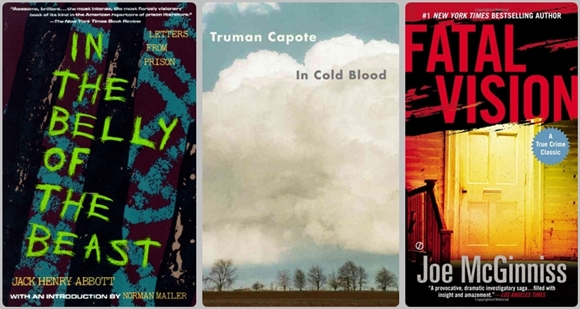3 True Crime Tales for ‘Serial’ Addicts Who Want More
By Matt Staggs

Who was responsible for the 1999 murder of Baltimore teenager Hae Min Lee? According to the courts, it was her ex-boyfriend Adnan Syed, but what if they got the wrong guy? Journalist Sarah Koenig wants to know the truth, and so do millions of people following her investigation on the hit podcast Serial.
Serial, which premiered in October, is devoting its first season to the case. Each week, Koenig presents another hour-long installment of the spellbinding tale replete with forbidden romance, obsession, and murder. Listeners tag along as Koenig chases leads, interviews possible suspects, and sifts through mountains of evidence with a fine-toothed comb.
Koenig doesn’t know how the story will end, and in an age of tightly-scripted crime dramas, the excitement that anything could happen keeps listeners hooked. The next episode could be the one that proves Adnan's innocence or confirms his guilt. The tension is high and time is running out: Koenig will move on to a new story in season two.
Are you one of the millions of Serial addicts? Do the days between episodes feel like an eternity? If so, give your inner detective something else to work on in the meantime with one of these great books about writers and the criminal cases that consumed them.
Fatal Vision by Joe McGinnis
In the early morning hours of February 17, 1970, Fort Bragg Army base military police received a call for help from Jeffrey MacDonald, a surgeon and Green Beret who lived on the base with his family. Investigators arriving at the scene found MacDonald wounded but alive, and his wife and two daughters stabbed and bludgeoned to death. MacDonald told investigators that they had been the victims of a home invasion by a group of hippies. MacDonald said that he had been injured trying to protect his family but his efforts were not enough to save them. His story began to unravel immediately, and the military charged him with the murders.
A successful defense, however, saw him cleared of charges and discharged from the Army a free man. But numerous inconsistencies in the trial, along with campaigning by members of the victims' family, led to a second trial in the civilian justice system. Eager to garner public sympathy and raise money for his defense, MacDonald hired author Joe McGinnis to write his story. McGinnis took the job, and had exclusive access to MacDonald throughout the 1979 trial. The former Green Beret was found guilty of all charges and sentenced to three consecutive life sentences. The long-awaited book was published in 1983. MacDonald claimed that McGinnis had agreed to put a sympathetic spin on the story that would support his claims of innocence. Instead, McGinnis's Fatal Vision characterized MacDonald as a sociopath and held to the conviction that he murdered his family while under the influence of drugs.
In the Belly of the Beast by Jack Henry Abbot
While writing The Executioner's Song, author Norman Mailer maintained a regular correspondence with the book's subject, Gary Gilmore: a convicted murderer awaiting execution on Utah's death row. While exchanging letters with Gilmore, Mailer began to receive letters from another convict at the same facility: a career criminal and murderer named Jack Henry Abbot. Mailer and Abbot also began to correspond, and the novelist became so enamored by the convict's writing talent that he began to lobby for his release. Other influential writers and celebrities joined Mailer's crusade and Abbott was eventually approved for parole.
Abbott might have been a talented writer, but he was, after all, a murderer. He was scarcely out of prison six weeks before murdering an aspiring young actor during a chance altercation. Abbot went on the run, fleeing to Louisiana where he was caught working as an oil field hand. Mailer, who attended the trial along with other prominent Abbot fans, told a group of gathered reporters that "Sometimes, culture is worth the risk." Despite the high profile support, Abbott returned to prison, this time for good. He wrote one more book before hanging himself in his cell.
In Cold Blood by Truman Capote
On the night of November 15, 1959, a Holcomb, Kansas farmer, his ailing wife and two of their four children were brutally murdered in their home. After reading an article about the murders in the New York Times, author Truman Capote, along with author Harper Lee, drove to Kansas to interview Holcomb residents. Several weeks after Capote and Lee's visit, two recent parolees, Richard Hickock and Perry Smith, were arrested in connection with the murders. Capote continued to follow the case for years, and interviewed both Hickok and Smith on numerous occasions. In Cold Blood, Capote's account of the murders and trial, was an enormous success, but it was not without controversy. Several key figures involved in the investigation came forward to claim that Capote had misrepresented the events of the case, and in some instances, even invented things out of whole cloth.
